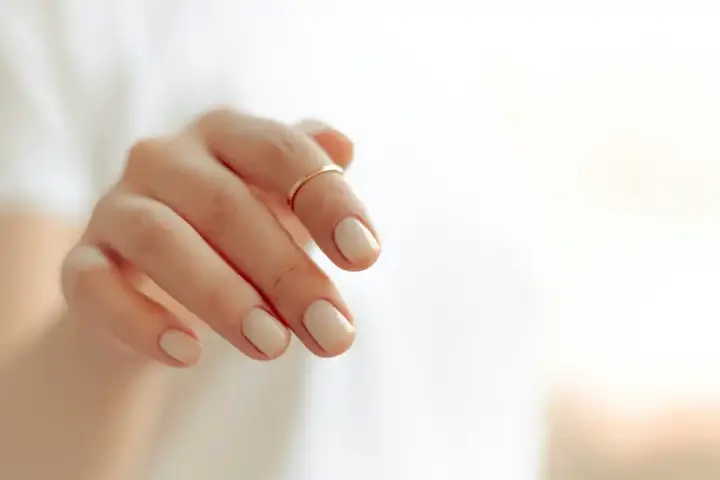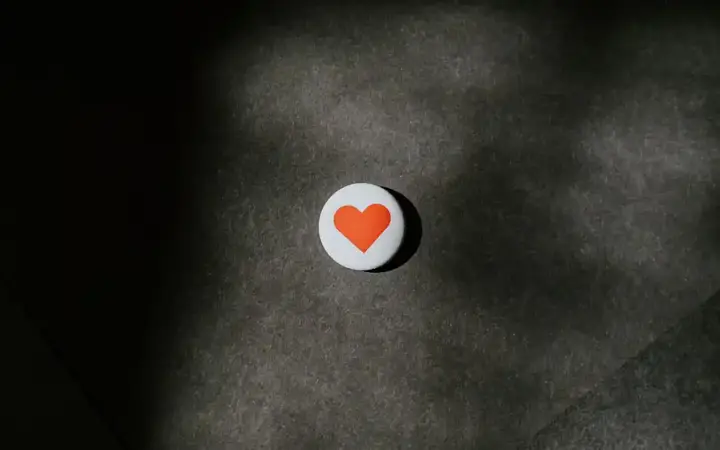Many amazing things your nails can tell you
Diana Armstrong hasn't cut her nails in over 24 years. When she was last measured in 2022, her nails were 42 feet 10.4 inches (13 meters) long. Whether you consider your nails as a statement of style or simply use them to scratch or exfoliate some dead skin every now and then, know that they often tell important stories. Nails can be the first evidence that something has gone wrong with your health. Not only are bumps, bumps and discolorations unsightly, they can indicate serious problems with your skin, liver, lungs, nutrition, and more. To know what to look for, it's helpful to understand the formation of nails, that hard surface that grows about 0.14 inches (3.5 mm) per month – and for information, it's always a little faster in your dominant hand.
Recommend
The basic parts of the nails include:

Nail plate: The hard visible nail made of keratin, a fibrous protein composed of amino acids, primarily cysteine, glycine, proline, serin, alanine, and tyrosine.
Nail bed: The skin below the nail plate that supports it.
Matrix: The area at the base of the nail where new nail cells are produced. This is the vital part of the nail. After the nail forms at the base, it is essentially dead, which is why the nails do not feel and do not sweat. This is also why if you hit the base of your nail too hard, you may "grow a strip" caused by damaging growth cells, sometimes permanently.
Moon: The white region in the shape of a half-moon at the base of the nail, which is the visible part of the array.
Epidermis: The thin layer of dead tissue that adheres to the nail plate. Be careful with the skin, especially if you like a good manicure. This layer of skin adheres to the nail to prevent the entry of bacteria and fungi. Damage to the skin and allowing it to rise from the plate can lead to annoying nail infections. Beware of overly aggressive manicurists; never exclude the skin.
Nail folds: The skin that folds, frames and supports the nail from three sides.
Here is the file of nail problems that you should pay attention to:
Tension
Stress can affect nail health, just as it affects hair. Nail growth will slow down, become more brittle and prone to peeling. With severe illness and tension, horizontal grooves may also appear extending from one side of the nail to the other, known as Poe lines. The changes are thought to be caused by high cortisol levels. Researchers have shown that during stress, cortisol increases not only in your body but also in your nails. For example, a 2016 study of 19 college students found that cortisol in nails was higher during exam periods. Another study revealed that 51 Asian medical students had higher nail cortisol when their perceived stress increased.
Vitamin deficiency

The way you eat will eventually show itself on your nails. Low zinc causes horizontal lines and inflammation around the epidermis, which can lead to infection. Vitamin D deficiency may lead to brown lines from the skin to the ends as well as smooth nails. Vertical stripes appear, to the extent that the nail can split, as well as pale, brittle and concave nails (the shape of a concave nail), appear with low iron levels. Vitamin B12 deficiency may cause discoloration from blue to black with longitudinal stripes, and low vitamin A leads to weak nails.
Low protein
It's not just about vitamins; vitamin A also affects nails because proteins are essential for making collagen, elastin and keratin, which are the building blocks of nails. When your body doesn't have enough protein, nail growth slows down, causing more breakage, splitting, flaking and cracking. Deep lines and a pale appearance may also develop. With severe protein deficiency, nails may become soft.
Melanoma

Melanoma, a type of skin cancer, can grow under your nails and usually appears as a dark vertical line (from top to bottom). These tumors are most common in the big toe, thumb or index finger, and account for only 0.7% to 3.5% of all melanomas, and are often aggressive. Unlike other skin cancers, these tumors are not associated with overexposure. Although anyone is at risk, it is more common among people of African, Asian or Hispanic descent, as well as among people between the ages of 50 and 70. The cancer begins in melanocytes called melanocytes in the nail matrix that activate and increase melanin production resulting in vertical brown to black lines below the nail. The lines may start small but may grow to cover the entire nail and extend to the epidermis. But not all dark stripes are skin cancer. Common nail moles can also appear similarly, and individuals with black and dark skin are more likely to develop benign pigment lines. To be safe, any color change or brown lines is worth visiting a dermatologist's office.
Nail care
Preventing underlying conditions affecting your nails isn't always possible, but there are steps to take to protect your nails.
Stay hydrated and eat a balanced diet.
Consume adequate amounts of protein, zinc, biotin, vitamins A and C.
Moisturize your nails and skin and avoid cutting the skin or pushing it back.
Use nail hardeners in moderation, as overuse can weaken the nails.
Whether you keep your nails long or short, painted or normal, keep an eye on them for clues to your underlying health, and consult a doctor in case of any worrying changes.
![]()
How to build friendships in the workplace while staying professional
Having friends at work can boost happiness, motivation, and performance. Simple moments like coffee breaks or team meals can spark real connections. While workplace friendships can enrich your daily life, it’s key to set clear boundaries to avoid issues like gossip or favoritism. more- ADVERTISEMENT
![]()
We paint it wrong: the sun is not orange
The sun isn’t just orange—it’s a masterpiece of shifting colors. From pale reds and soft blues at dawn to radiant whites at noon, its beauty changes with time and weather. Films and culture fooled us, but nature tells a richer, truer story full of color and mystery. more- ADVERTISEMENT
![]()
A piece of the earth's crust is missing, and scientists are discovering its whereabouts!
A piece of the earth's crust is missing, and scientists are discovering its whereabouts! more- ADVERTISEMENT
![]()
The human heart shows signs of aging after just one month in space
Heart tissue sent to space by Johns Hopkins scientists showed weakened contractions, slower beats, and aging-like changes within a month. The "Heart on a Chip" study reveals how microgravity affects heart health, offering clues for astronaut safety and potential treatments for heart conditions back on Earth. more- ADVERTISEMENT
![]()
What makes the global demand for Arabic grow?
Arabic is booming globally, reflecting pride, rich culture, and growing global influence. With rising demand in business, media, internet, and diplomacy, Arabic is becoming essential in today’s world, offering vast opportunities for communication, jobs, and cultural exchange. more- ADVERTISEMENT
![]()
Medieval Viking banquets
Medieval Viking banquets more- ADVERTISEMENT
![]()
The Rise of the Reds from the Ashes: The Epic Story of Liverpool Football Club's Triumphs and Setbacks
Liverpool FC’s journey is one of passion, heartbreak, and glory. From humble beginnings in 1892 to conquering Europe under Klopp, it’s the setbacks, spirit, and resilience that make fans fall in love. At Anfield, through every triumph and tragedy, the Reds never walk alone. more- ADVERTISEMENT
![]()
The Sahara Dilemma: Are Deserts Vital to the Balance of Our Planet?
Deserts may seem lifeless and harsh, but they’re vital to our planet. They store carbon, support unique species, and even help nourish the Amazon Rainforest. Despite their importance, human activities threaten these fragile ecosystems. So yes—deserts matter, and we need them more than we think. more- ADVERTISEMENT
![]()
A good leader knows he doesn't know everything: lessons my old sergeant didn't learn
Great leaders don’t pretend to know it all—they lead with humility, collaboration, and a willingness to learn. In today’s fast-changing world, success comes from empowering teams, embracing change, and valuing diverse perspectives, not clinging to outdated notions of authority. more- ADVERTISEMENT
![]()
7 simple tips to improve daily concentration
7 Simple Tips to Improve Daily Focus more- ADVERTISEMENT





















